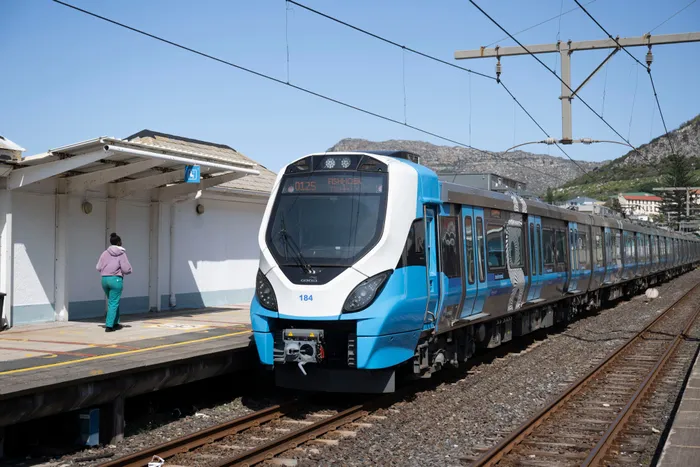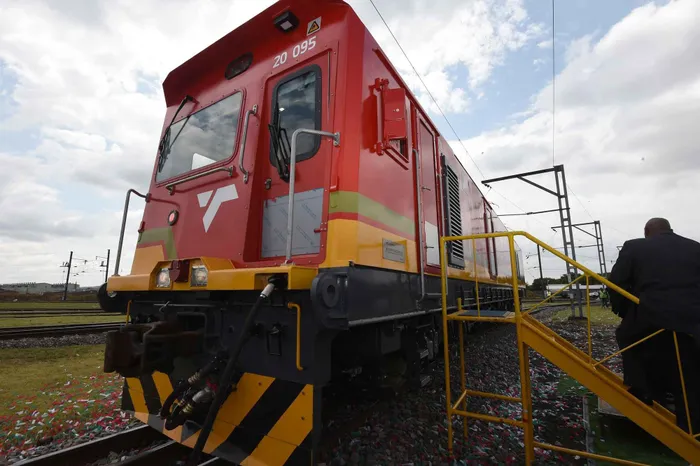Railway Safety Regulator unveils alarming safety report for 2024/25

The Rail Safety Regulator said Prasa saw an impressive 94% rise in ridership, fuelled by its Rail Corridor Recovery Programme and upgrades to the signalling system on the pivotal Mabopane corridor.
Image: File
The Railway Safety Regulator (RSR) unveiled its Annual State of Safety Report (ASoSR) for the 2024/25 reporting period showing that 81 people died and 336 injured in rail related incidents.
RSR CEO Brian Monakali led a panel discussion featuring industry leaders, including the CEOs of Transnet Freight Rail (TFR), Transnet Rail Infrastructure Manager (TRIM), the Gautrain Management Agency (GMA), and the Group CEO of PRASA, reflecting on the annual safety achievements and the obstacles still ahead.
The ASoSR is not merely a regulatory formality but a comprehensive, data-driven examination mandated under the National Railway Safety Regulator Act No.30 of 2024. This year’s report indicates that the sector recorded 9,200 safety-related occurrences, representing a commendable 7.2% decrease from the previous year. Yet, this positive figure is clouded by a significant 10.9% increase in operational safety incidents, now standing at 10.1% above the five-year average. These incidents are largely attributed to deteriorating infrastructure and signalling failures.
On a more positive note, the report reveals that fatalities have decreased to 81, marking the lowest number in five years. However, injuries surged to 336, the highest recorded in the same timeframe. The most prevalent operational incidents included collisions, derailments, fires, pantograph hook-ups, and cases involving individuals being struck by trains. Notably, most derailments occurred at low speeds within yard sidings and port terminals, and fire incidents were often linked to veld conditions and electrical faults. A particularly alarming rise in pantograph hook-ups points to an increasing vulnerability in electrical infrastructure, often exacerbated by theft and asset degradation.

The Rail Safety Regulator said the most prevalent operational incidents included collisions, derailments, fires, pantograph hook-ups, and cases involving individuals being struck by trains.
Image: Kopano Tlape.
The report showed that security remains a pressing concern, with security-related incidents making up a staggering 70% of all reported occurrences. Although asset theft decreased by 17%, personal safety issues, crowd-related disturbances, and vandalism continue to pose substantial threats to the railway system. Provinces such as KwaZulu-Natal bore the brunt of these issues, while Gauteng, Mpumalanga, and the Western Cape collectively reported the majority of fatalities and injuries.
Despite these daunting challenges, the report does highlight several notable achievements. PRASA saw an impressive 94% rise in ridership, fuelled by its Rail Corridor Recovery Programme and upgrades to the signalling system on the pivotal Mabopane corridor. Transnet Freight Rail also reported a modest recovery in freight movement, while the Gautrain maintained steady demand, despite a slight decrease in ridership.
The Safety Regulator said in its effort to mitigate systemic risks, they've undertaken numerous inspections, audits, and issued enforcement directives to various operators. Furthermore, targeted investigations, including a Board of Inquiry related to the Hammarsdale–Georgedale collision, underline the RSR’s commitment to proactive oversight and accountability within the sector.
In concluding remarks, Monakali emphasised the report’s importance, stating, “The ASoSR is not just a regulatory requirement, it’s a call to action. A safe, secure, and reliable railway system is central to South Africa’s economic recovery and inclusive growth. Addressing these challenges demands urgent collaboration, innovation, and investment across the sector.”